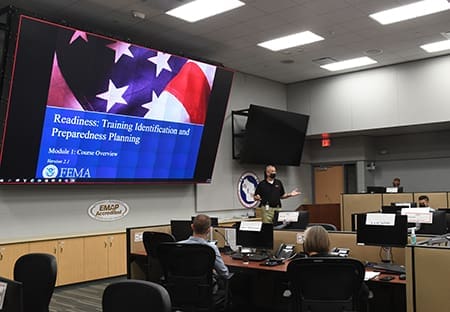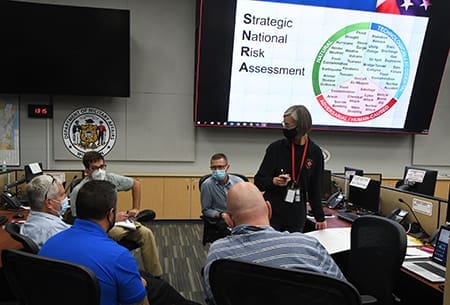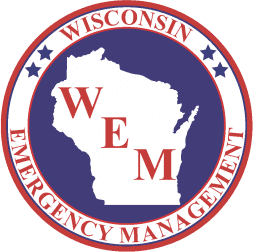MADISON, Wis. – When a disaster strikes, first responders and emergency management personnel rely on extensive planning and training to meet the critical needs of an incident. Along with its many partners, Wisconsin Emergency Management (WEM) works to ensure those resources are available, through extensive planning efforts and by offering thousands of hours of training and exercises around the state each year.
The state recently called on national experts to help assess those efforts and identify what priorities should be set for planning, training and exercises conducted by WEM and its partners in the coming years. Personnel from several state, local agencies and federal partners gathered in Madison this month for an Integrated Planning and Preparedness Workshop (IPPW).
“Any time we can get people on the same page when it comes to planning, training and exercises is a good thing,” said WEM Training Section Supervisor Kevin Wernet. “Bringing these groups together to help us put together our five-year state strategy is huge. To have emergency managers, law enforcement, fire and others in here, who can speak for their discipline, makes that process more effective.”
The workshop was led by instructors from the Texas A&M Engineering and Extension Service(TEEX), an internationally recognized leader in delivering training on emergency response and exercises.
“Our goal is to better define training that’s going to improve the overall preparedness of the state,” said TEEX Course Developer and Senior Instructor Tab Troxler. “We do that by conducting a real deep dive into the types of emergencies and disasters that can occur here, the cascading effects, and identify training that we think is going to improve the outcomes.”

Troxler added that preparedness is not a destination, it’s a route that must be followed while looking at signs along the way to show progress is being made.
“This process provides results, and the benefit of it is that communities will be better served when a disaster strikes.” Troxler said. “They’re going to respond quicker. They’re going to recover quicker.”
For Lauri Maki, the Brown County emergency management director, the workshop is a chance to evaluate how training and exercises are conducted in his area so that he can ensure their resources are being used effectively.
“We’re always trying to find opportunities to improve the public safety response in our county, including activations from the county level in support of municipalities,” Maki said. “It’s an opportunity to learn new things and take that back.”
Maki said it’s also helpful to connect with other emergency managers and responders, so they can build the relationships that should be established before a disaster even occurs.
“If anything was showed to us by the response to the COVID pandemic, it was the importance of building those relationships,” he said. “Seeing people from all over the state really benefits us because most true disasters don’t stay local.”
Village of Pleasant Prairie Police Captain Paul Marik attended the training as his community looks to revamp its emergency operations plans. He said leadership has seen the value of ensuring all levels of government know how to effectively carry out a response.

“The light bulb is kind of going on with these other agencies that don’t normally work under the incident command system,” Marik said. “Getting in a room with people who know more than us helps us develop plans we can bring back to our leaders, as we look to update those plans and train people on them.”
The entire process was observed by representatives from the Federal Emergency Management Agency (FEMA). Kate Bogan, a branch chief in the National Exercise Division at FEMA, said no two states are going to approach these issues the same way, and there’s a benefit to being able to watch these conversations going on at the state and local level.
“We put out the guidance at the federal level and provide support, but we don’t have all the answers,” Bogan said. “The people who are doing it day to day are the state and local entities. By coming out here and seeing how that is done, we can refine the guidance and share it in other places.”
Information gathered during the workshop will be used by WEM’s Bureau of Planning and Preparedness as staff work to outline priorities and strategies, along with planning for future training and exercise opportunities.
“It ties in identifying gaps so that we can update our plans, train our personnel, and then through exercising validate the ability to respond, Wernet said. “The intent is for all of us to sync those activities up, so we are better managing our resources.”
For more information on Wisconsin Emergency Management’s training and exercise programs, along with its ongoing missions to build capabilities and coordinate resources to support a safe and resilient Wisconsin, visit https://wem.wi.gov

